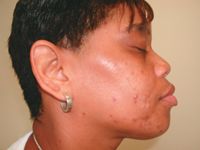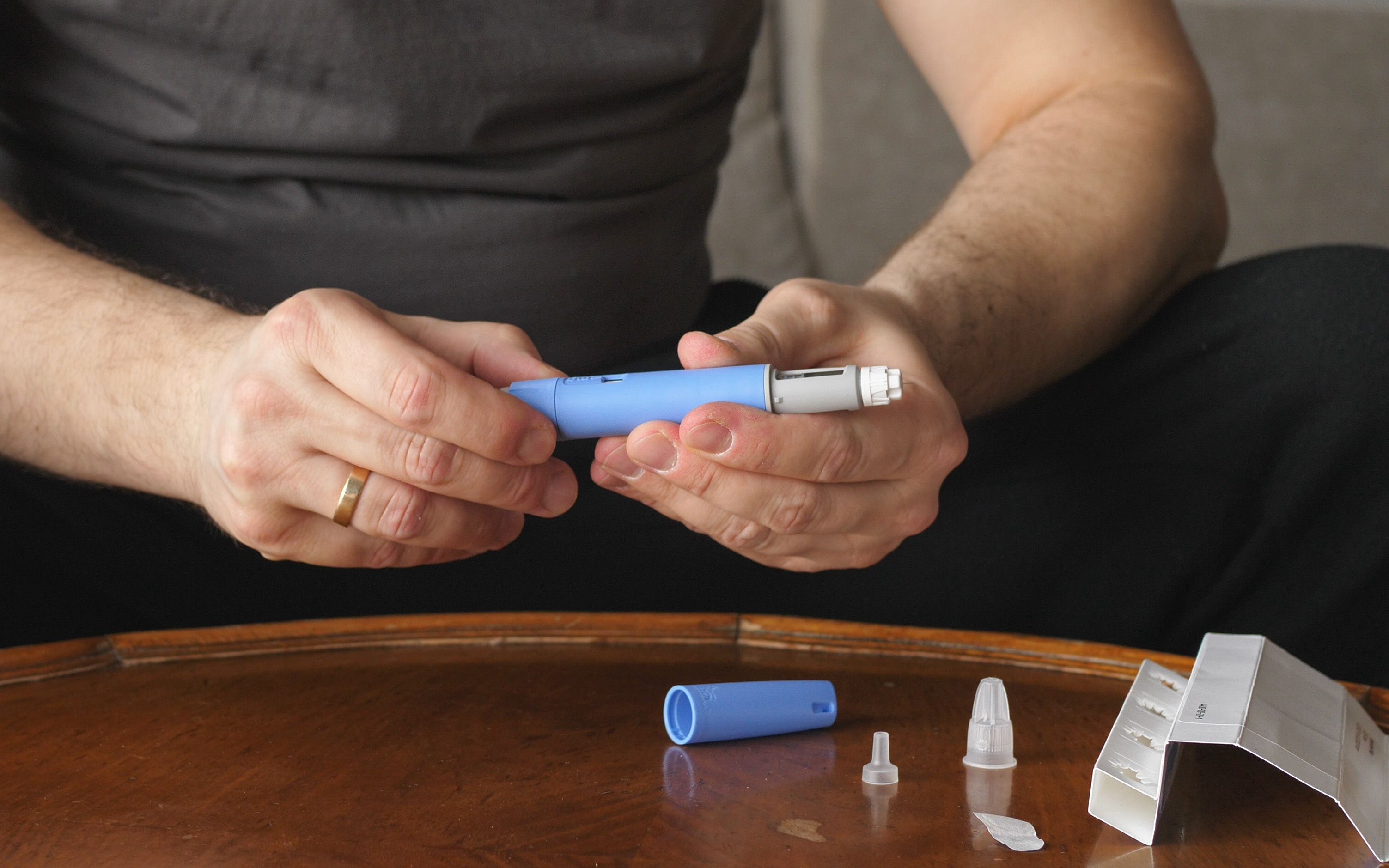- Case-Based Roundtable
- General Dermatology
- Eczema
- Chronic Hand Eczema
- Alopecia
- Aesthetics
- Vitiligo
- COVID-19
- Actinic Keratosis
- Precision Medicine and Biologics
- Rare Disease
- Wound Care
- Rosacea
- Psoriasis
- Psoriatic Arthritis
- Atopic Dermatitis
- Melasma
- NP and PA
- Skin Cancer
- Hidradenitis Suppurativa
- Drug Watch
- Pigmentary Disorders
- Acne
- Pediatric Dermatology
- Practice Management
- Prurigo Nodularis
- Buy-and-Bill
Article
Multimodal regimen provides rational, effective tratement for acne in skin of color
New York - A combination regimen beginning with adapalene cream 0.1 percent (Differin, Galderma) and incorporating the fixed triple-combination depigmenting cream (Tri-Luma Cream, Galderma) provides a well-tolerated and effective method for treating acne and its distressing sequel of post-in-flammatory hyperpigmentation (PIH) in African-American patients, said Valerie D. Callender, M.D., at the recently held Academy '04 meeting of the American Academy of Dermatology.

Study group Dr. Callender, clinical assistant prof-essor of dermatology, Howard University College of Medicine, Washington, D.C., presented her experience in a small case study including five patients with mild-to-severe acne and PIH and skin phototypes IV-VI. The series was comprised of four females aged 25 to 37 years old and one 16-year-old male. All were started on once daily treatment with adapalene cream 0.1 percent, and a three-month course of oral doxycycline 100 mg BID was also prescribed to the four patients with moderate-to-severe acne. Once daily treatment of hyperpigmented spots with the triple-combination cream containing hydroquinone 4 percent, tretinoin 0.05 percent, and fluocinolone acetonide 0.01 percent was initiated at week four, and all patients received instruction on a good skin care regimen that incorporated a mild cleanser, sun protection and moisturizer.
Efficacy endpoints included a physician's global assessment of acne and PIH severity along with ratings of PIH lesion size and darkness using a five-point scale (0=clear, 4=severe). The results showed improvement in all parameters by week 12. One patient continued adapalene alone thereafter while the rest were maintained on the combination regimen, and all benefited with control of their acne and further resolution of PIH.

"Inflammation is a key feature of acne in African-American patients, even of very mild or comedonal acne, and PIH is a common sequel that is associated both with the primary disease and can occur secondary to the use of irritating acne treatments," explains Dr. Callender. "Disfiguring and persistent, the hyperpigmentation can be very distressing and may be further exacerbated by use of oil-containing camouflage foundations that aggravate acne. Early and aggressive intervention designed to reduce acne severity and prevent and treat its inflammatory sequelae is key to successful management of acne in ethnic skin. In theory and in practice, this combination regimen appears to be well-suited for fulfilling those therapeutic goals."
Patient make-up Of the five patients in the study, one was rated as having mild disease in the physician's global assessment of acne and PIH severity at baseline, while two were considered to have moderate acne and PIH, and two were severely affected. Their histories revealed four of the patients had tried various treatments for acne, including over-the-counter products, tretinoin 0.025 percent cream, and clindamycin lotion, while one of those four patients had used 2 percent hydroquinone for PIH. One patient with very dry and sensitive skin using tretinoin had to discontinue that retinoid after just three weeks due to intolerable burning.
"Retinoids are essential in the effective treatment of acne and are particularly advantageous in skin of color where they modulate hyperpigmentation both through a direct action and secondary to an intrinsic anti-inflammatory property, Dr. Callender tells Dermatology Times. "Nevertheless, some physicians are hesitant to use a topical retinoid because of concerns about irritation."
Adapalene advantages "The experience of this small case series is consistent with results from larger clinical trials showing adapalene is a particularly good choice for use in skin of color from both efficacy and toler-ability perspectives," Dr. Callender says.





